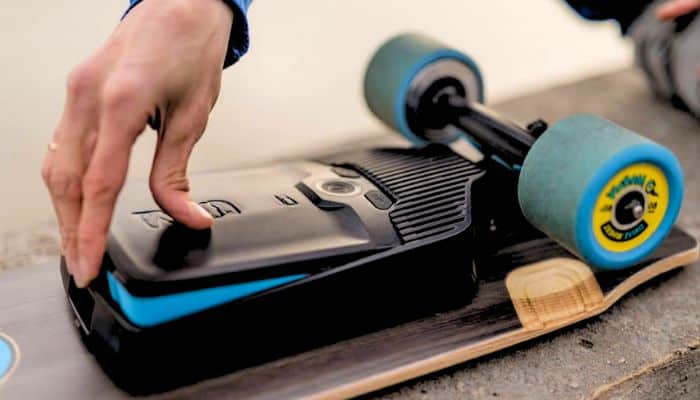Electric skateboards have become increasingly popular in recent years, offering a convenient and eco-friendly alternative for urban commuting and leisure. Central to the performance of any electric skateboard is its battery, which determines not only how far you can ride but also how long the board will serve you effectively. In this post, we’ll delve into various aspects that influence how long electric skateboard batteries last, focusing on battery life, types, management, and maintenance practices for not all electric skateboards.
Understanding Battery Types and Capacities
Electric skateboards typically use lithium-ion batteries, known for their remarkable energy density and efficiency. Lithium-ion batteries are preferred over older types of power packs like lead acid batteries due to their lighter weight and greater capacity. Some models use lithium polymer (LiPo) batteries, which offer slightly different characteristics in terms of power output and safety. The choice of battery type significantly affects the electric skateboard’s performance and longevity.
The capacity of a skateboard’s battery, measured in ampere-hours (Ah) or watt-hours (Wh), directly influences how long the board can operate on a single charge. More battery power generally means longer ride times before needing a recharge. However, the actual range achieved can vary depending on several factors such as riding style, terrain, and the rider’s weight.

Factors Affecting Battery Longevity
1. Charging Practices
Proper charging is crucial for maximizing an electric skateboard battery’s lifespan. Overcharging or consistently draining the battery to zero can harm its ability to hold a charge over time. Most modern electric skateboards come equipped with a battery management system (BMS) that helps protect the battery by using charge cycles, preventing overcharging and balancing the charge across cells.
Regular maintenance of the lithium ion battery charging system and using the charger provided by the manufacturer can drastically extend the battery’s lifespan. It’s recommended to charge the battery fully before storing it and to maintain at least a 50% charge if stored for extended periods.
2. Usage Pattern
How frequently and intensively you use your electric skateboard also impacts the battery’s longevity and longevity. Frequent, high-speed rides that drain the battery more quickly can lead to shorter overall battery life. In contrast, moderate use with regular but not complete discharging can help preserve the battery’s health.
Incorporating features like regenerative braking, which recharges the battery slightly during braking, can also enhance battery life by making use of energy that would otherwise be wasted.
3. Environmental Factors
Temperature plays a significant role in the health of electric skateboard batteries. Lithium-ion batteries, in particular, are susceptible to damage when exposed to extreme temperatures. Riding or storing the skateboard in very hot or cold conditions can lead to underperforming lithium batteries, and decreased battery life. It’s best to store your skateboard in a stable, cool environment and avoid leaving it in direct sunlight for extended periods.
Maximizing Battery Performance
To ensure your electric skateboard’s battery lasts as long as possible, consider the following tips:
- Avoid Extreme Temperatures: Store and use your skateboard in conditions that are not too hot or cold. Extreme temperatures can cause the battery to degrade more quickly.
- Maintain Regular Charging Habits: Avoid letting the battery completely discharge. Try to keep it charged between 20% to 80% to prevent voltage sag and extend its lifespan.
- Use the Right Charger: Always use the charger that comes with your skateboard or one recommended by the manufacturer to avoid damaging the battery.
- Follow Proper Storage Procedures: If you’re not planning to use your electric skateboard for a while, store the battery at a half-charge level in a cool, dry place.
Detailed Maintenance Tips for Battery Longevity
1. Regular Maintenance Checks
Consistent check-ups can prevent many battery problems before they worsen. Regularly inspect the battery pack for any signs of damage or wear. Look for swelling, leaks, or any unusual smells that could indicate a problem. Ensuring the battery connections are clean and secure also helps maintain optimal performance and safety.
2. Balanced Charging
Utilizing a balanced charging approach is critical for maintaining battery health. A battery management system (BMS) typically handles this by ensuring all cells within the battery pack charge at the same rate and level. Balanced charging helps prevent cells underperforming battery from being overcharged or undercharged, which can degrade the battery’s performance over time.
3. Optimal Charging Strategy
To further extend your battery’s lifespan, adopt an optimal charging strategy. Avoid charging the battery immediately after riding, especially if the battery is hot. Let it cool down to a stable temperature before charging. Also, partial charges are preferable to full charges; charging up to 80% can significantly reduce stress on lithium battery and prolong the battery’s overall lifespan.

Troubleshooting Common Battery Issues
1. Reduced Range
If you notice that your skateboard’s range decreases significantly, it might be a sign that the battery capacity is diminishing. This could be due to age, improper charging habits, or extended exposure to adverse conditions. Consider recalibrating the skateboard battery or consult with a professional to check if it needs replacing.
2. Voltage Sag
Voltage sag occurs when the skateboard feels less powerful, especially during acceleration or climbing hills. This can be a sign of aging cells within the battery pack or an indication that the battery is not fully charged. Ensure your battery correctly charging system is functioning correctly and consider a battery replacement if the problem persists after full charges.
3. Battery Does Not Hold Charge
If your battery loses charge unusually quickly or fails to charge at all, first check the charger and charging cable for any faults. If these are functioning properly, the issue may lie within the battery cells, cell phones themselves or the BMS. In such cases, it’s often more practical to replace the battery than attempt repairs.
Extending the Life of Your Electric Skateboard Battery
Aside from the specific maintenance tips mentioned above, several broader practices can help keep your electric skateboard’s battery in prime condition:
- Use High-Quality Accessories: Always use high-quality, compatible accessories and replacement parts for your skateboard to ensure maximum compatibility and safety.
- Follow Manufacturer’s Guidelines: Adhere strictly to the manufacturer’s guidelines for usage, charging, and storage. Deviating from these guidelines can void warranties and lead to battery issues.
- Monitor Battery Health Regularly: Keep an eye on the battery’s performance over time. Early detection of potential issues can prevent them from becoming more serious.
- Educate Yourself on Battery Care: Understanding the basic principles of how batteries work and how they degrade can help you make better decisions about your skateboard’s use and maintenance.
By following these detailed maintenance tips and troubleshooting common issues, you can enjoy a reliable and efficient ride for many years. Remember, the longevity of electric skateboard batteries largely depends on how they are treated. Proper care and regular maintenance not only ensure longer battery life but also enhance the overall performance of your electric skateboard.

